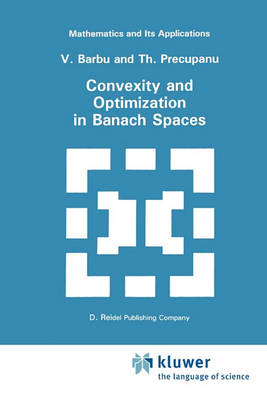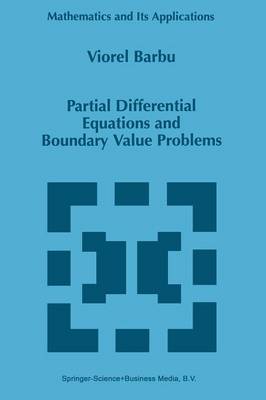Mathematics and its Applications
3 primary works
Book 10
An updated and revised edition of the 1986 title Convexity and Optimization in Banach Spaces, this book provides a self-contained presentation of basic results of the theory of convex sets and functions in infinite-dimensional spaces. The main emphasis is on applications to convex optimization and convex optimal control problems in Banach spaces. A distinctive feature is a strong emphasis on the connection between theory and application.
This edition has been updated to include new results pertaining to advanced concepts of subdifferential for convex functions and new duality results in convex programming. The last chapter, concerned with convex control problems, has been rewritten and completed with new research concerning boundary control systems, the dynamic programming equations in optimal control theory and periodic optimal control problems.
Finally, the structure of the book has been modified to highlight the most recent progression in the field including fundamental results on the theory of infinite-dimensional convex analysis and includes helpful bibliographical notes at the end of each chapter.
This edition has been updated to include new results pertaining to advanced concepts of subdifferential for convex functions and new duality results in convex programming. The last chapter, concerned with convex control problems, has been rewritten and completed with new research concerning boundary control systems, the dynamic programming equations in optimal control theory and periodic optimal control problems.
Finally, the structure of the book has been modified to highlight the most recent progression in the field including fundamental results on the theory of infinite-dimensional convex analysis and includes helpful bibliographical notes at the end of each chapter.
Book 310
Mathematical Methods in Optimization of Differential Systems
by Viorel Barbu
Published 31 October 1994
This work is a revised and enlarged edition of a book with the same title published in Romanian by the Publishing House of the Romanian Academy in 1989. It grew out of lecture notes for a graduate course given by the author at the University if Ia~i and was initially intended for students and readers primarily interested in applications of optimal control of ordinary differential equations. In this vision the book had to contain an elementary description of the Pontryagin maximum principle and a large number of examples and applications from various fields of science. The evolution of control science in the last decades has shown that its meth ods and tools are drawn from a large spectrum of mathematical results which go beyond the classical theory of ordinary differential equations and real analy ses. Mathematical areas such as functional analysis, topology, partial differential equations and infinite dimensional dynamical systems, geometry, played and will continue to play an increasing role in the development of the control sciences. On the other hand, control problems is a rich source of deep mathematical problems. Any presentation of control theory which for the sake of accessibility ignores these facts is incomplete and unable to attain its goals. This is the reason we considered necessary to widen the initial perspective of the book and to include a rigorous mathematical treatment of optimal control theory of processes governed by ordi nary differential equations and some typical problems from theory of distributed parameter systems.
Book 441
The material of the present book has been used for graduate-level courses at the University of Ia~i during the past ten years. It is a revised version of a book which appeared in Romanian in 1993 with the Publishing House of the Romanian Academy. The book focuses on classical boundary value problems for the principal equations of mathematical physics: second order elliptic equations (the Poisson equations), heat equations and wave equations. The existence theory of second order elliptic boundary value problems was a great challenge for nineteenth century mathematics and its development was marked by two decisive steps. Undoubtedly, the first one was the Fredholm proof in 1900 of the existence of solutions to Dirichlet and Neumann problems, which represented a triumph of the classical theory of partial differential equations. The second step is due to S. 1. Sobolev (1937) who introduced the concept of weak solution in partial differential equations and inaugurated the modern theory of boundary value problems. The classical theory which is a product ofthe nineteenth century, is concerned with smooth (continuously differentiable) sollutions and its methods rely on classical analysis and in particular on potential theory. The modern theory concerns distributional (weak) solutions and relies on analysis of Sob ole v spaces and functional methods. The same distinction is valid for the boundary value problems associated with heat and wave equations. Both aspects of the theory are present in this book though it is not exhaustive in any sense.


